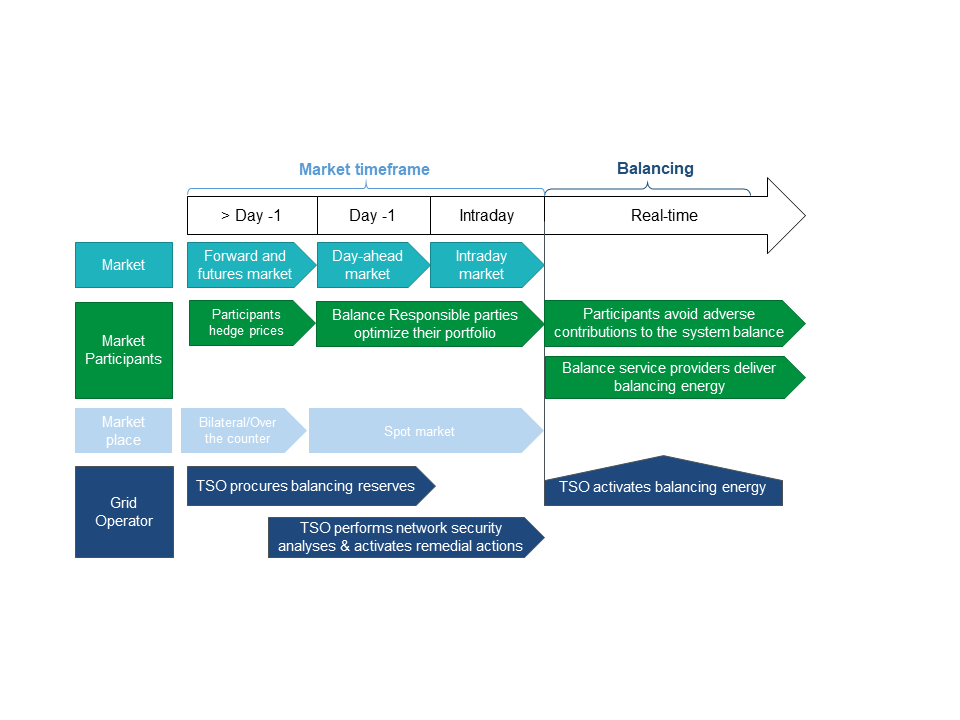The energy sector is developing rapidly. The process of European market integration began some years ago. Its purpose is to create a single European market that enables market parties to trade gas and electricity across national borders easily and efficiently.
Electricity market

Transparency data
We provide transparency data on our operations on our Dutch and German transparency page and on ENTSO-E.
To transparency pagesE-Insights
Our vision is to be one of the most transparent Transmission System Operators (TSO) in Europe and thereby creating value for society. In this Energy Insights section we present selected energy related topics and show data, information and valuable insights.

The forward futures, day-ahead and intraday market are all types of wholesale markets that differ in timeframe and products. All of them are trading platforms where market participants can sell and purchase their electricity. In parallel, the TSO organizes a continuous balancing energy market, in which prequalified balancing capacity is procured and remunerated for its availability. The figure below shows an overview of how the markets are organized by time and their function.

Forward and Futures Market
On the forward and futures market, electricity is traded between four years and one month before delivery. Forwards and futures are financial products, which are settled against spot market prices of future delivery periods. While futures are standardized contracts on power exchanges, forwards are traded bilaterally (over the counter) and are not standardized.
The forward and futures market is important for many large producers, large consumers, suppliers, Balance Responsible Parties (BRPs) or traders who trade power bilaterally to hedge electricity prices for a certain period of time. Hedging of prices gives these parties financial certainty that they will be able to purchase or sell a certain volume for a pre-agreed price.
If two parties want to conclude a deal across borders, they also need to acquire long-term cross-zonal transmission rights that are auctioned on the JAO platform.
Day-Ahead Market
On the day-ahead market, participants can sell and buy electricity in a pan-European auction for the 24h of the next day in (hourly) blocks. The day-ahead market is cleared at 12:00 o’clock noon each day of the year. At this time, the intersection of demand and quantity offered determines the electricity price and volume for each hour. This price is then either paid or received by all market participants who were successful in the auction. Because the day-ahead market is organized short before delivery and has a single clearing price (per hour), it best reflects the value of electricity during different hours. The clearing price of the day-ahead market is therefore often referred to as “the electricity price”. The price is determined per bidding zone, which in Europe mostly corresponds to the borders of a country.
Intraday markets
After the day-ahead market is cleared, the intraday market opens. Through the intraday market, buyers and sellers can adjust their order volumes in line with better demand or renewable feed-in forecasts or unexpected power plant outages. On the intraday market it is possible to trade power continuously in quarter-hourly, one hour or even longer intervals. As soon as a buy bid matches a sell bid a trade is concluded. A deal needs to be completed at least 5 minutes before delivery.
The platform for day-ahead and intraday trade is the spot market. There are multiple different spot exchanges for electricity in Europe, such as EPEX or NordPool. While they share the same trading platform, day-ahead and intraday market have different price setting procedures. Day-ahead trades are subject to a market clearing principle, where the last accepted bid sets the price for all transactions. Prices in intraday trading are set via the pay-as-bid principle. It means that the trade deal is completed as soon as a sell bid is accepted by a buyer.
In contrast to the long-term market for bilateral trades between individual consumers, producers or third parties, the day-ahead and Intraday markets are only accessible for Balance Responsible Parties (BRPs).
